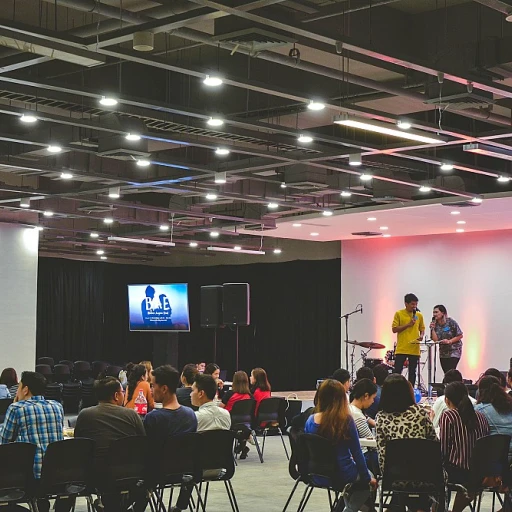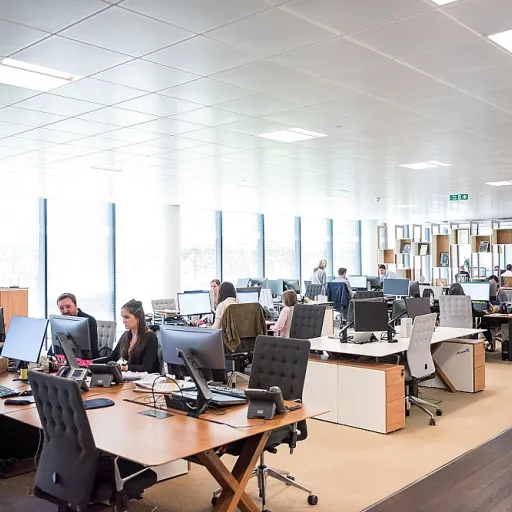
Defining Sedentary Work
Exploring the Fundamentals of Sedentary Employment
Understanding what defines a sedentary job is crucial for grasping its implications on both the employee's health and the employer's brand. At its core, sedentary work is characterized by prolonged periods of sitting, generally without significant physical exertion. These jobs typically demand light work involving minimal lifting, frequent sitting, and only occasional walking or standing. Such positions are categorized based on the functional capacity required to perform job tasks efficiently. As the full range of expectations can differ widely across professions, it becomes vital to determine how a job may impact a worker's physical and social well-being. For instance, jobs demanding frequent sitting and limited lifting carry varied implications for workers’ compensation and disability benefits. With residual functional limitations potentially impacting a disabled person’s ability to perform certain tasks, employer branding must consider these aspects diligently. This understanding not only aligns with social security guidelines in determining disability benefits but also influences recruitment strategies and workplace policies. In today's dynamic job market, many workers seek clarity on what constitutes a sedentary role. They look for transparency in terms of job benefits and security, including aspects like social security disability and functional limitations. As companies navigate the grid rules that govern these determinations, a comprehensive approach to how such jobs are defined and categorized becomes essential. This further explores enhancing employee experience through seamless access to workplace resources.The Impact of Sedentary Work on Employee Well-being
Understanding the Health Repercussions
Sedentary work, characterized by prolonged periods of sitting and minimal physical activity, can have significant implications on employee well-being. The nature of such jobs often limits the functional capacity of workers, leading to various health issues over time. While these roles might seem less physically demanding compared to those involving frequent lifting or light work, they still pose unique challenges.
Physical and Mental Health Concerns
Extended sitting can contribute to a range of health problems, including obesity, cardiovascular disease, and musculoskeletal disorders. The lack of movement in sedentary jobs can exacerbate these conditions, making it difficult for employees to maintain a healthy lifestyle. Additionally, the mental health of workers can be affected, with increased risks of anxiety and depression due to the isolated nature of many sedentary roles.
Impact on Productivity and Engagement
The physical limitations imposed by sedentary work can also affect productivity. Employees experiencing discomfort or pain may find it challenging to perform their duties effectively. This can lead to increased absenteeism and reduced engagement, impacting overall organizational performance. Employers must recognize these challenges and consider strategies to mitigate them, ensuring a healthier work environment.
Legal and Financial Implications
From a legal perspective, employers need to be aware of the potential for increased claims related to workers compensation and social security disability benefits. Employees who develop health issues due to sedentary work may seek compensation, leading to financial implications for the organization. Understanding the residual functional capacity of employees and providing accommodations can help reduce these risks.
For more insights on addressing these challenges, consider exploring corporate wellness initiatives that can support employee health and well-being.
Sedentary Work and Employer Branding
Re-evaluating Work Environments for Sedentary Employees
The growing prevalence of sedentary work has crucial implications for employer branding, especially when considering the need to attract talent and maintain a positive organizational image. Sedentary occupations typically involve prolonged sitting, with minimal physical exertion. As businesses strive to create environments that support both physical and mental well-being, developing strategies that address the impacts of sedentary work is essential. In the realm of employer branding, organizations that focus on mitigating the effects of sedentary lifestyles demonstrate a commitment to employee welfare. This focus not only boosts the organization's reputation but also attracts potential employees who value health-conscious employers. Employers who recognize the importance of balancing work demands with health initiatives may offer adjustable workspaces or encourage regular work breaks to foster a healthier work culture. Furthermore, addressing sedentary work through employer branding can enhance an organization's social responsibility by catering to employees' diverse needs. This approach includes acknowledging the functional limitations some employees may have, such as those falling within the scope of disability guidelines like the Social Security Administration's (SSA) determination of disability benefits. For instance, ensuring that work environments are accessible to employees with reduced functional capacity addresses both physical and social equity needs. It's crucial for employers to also consider the legal frameworks, such as workers compensation and the Grid Rules, which determine eligibility and requirements for specific job roles. By aligning company policies with these requirements, businesses portray themselves as compliant and supportive entities that prioritize the well-being of their workforce. To learn more about how employers can enhance their strategy and improve workplace equity, you might find these insights helpful on enhancing workplace equity through innovative software solutions.Strategies for Mitigating Sedentary Work Effects
Building Active Workplace Cultures
In mitigating the effects of sedentary work, it's crucial for companies to actively foster environments that encourage movement and dynamic engagement. Promoting physical activity within the workplace not only helps address the physical limitations associated with extended sitting but also boosts overall employee well-being.- Designing Flexible Workspaces: Offering standing desks or adjustable workstations is an effective way to combat the adverse effects of prolonged sitting. This allows workers the opportunity to choose between sitting and standing, thus engaging different muscle groups.
- Incorporating Regular Movement Breaks: Encouraging workers to take short, frequent breaks to move around can significantly reduce the health risks associated with sedentary behavior. This could be as simple as a few minutes of walking or light stretching.
- Facilitating Active Commuting: Companies can promote walking or cycling to the workplace by providing facilities like showers and dedicated bike parking. This not only fosters a culture of wellness but also enhances the company’s environmental image.
- Implementing Wellness Programs: Providing activities such as yoga, group exercises, or ergonomic training as part of corporate wellness initiatives helps address sedentary challenges. Offering resources and programs that support physical activity can be a distinctive element of a company’s employer branding strategy.
- Creating Inclusive Health Policies: Employers need to consider the diverse needs of their workforce. For example, facilitating light duty modifications can accommodate workers with specific physical limitations, allowing them to perform their roles effectively without feeling disabled by their environment.
Innovative Employer Branding Approaches
Embracing Flexibility and Inclusivity
In the evolving landscape of employer branding, companies are increasingly recognizing the importance of flexibility and inclusivity. As sedentary work becomes more prevalent, organizations are adopting innovative approaches to ensure their employer brand resonates with a diverse workforce. This includes offering flexible work arrangements that accommodate the needs of employees who may have limitations in their functional capacity, such as those who perform sedentary jobs or require light duty tasks.
Leveraging Technology for Employee Engagement
Technology plays a crucial role in enhancing employee engagement and promoting a positive work environment. Employers are utilizing digital platforms to facilitate communication and collaboration among workers, regardless of their physical location. This not only helps in maintaining productivity but also ensures that employees feel connected and valued, which is essential for a strong employer brand.
Prioritizing Employee Well-being
Companies are increasingly focusing on the well-being of their employees as a core component of their employer branding strategy. This involves implementing programs that address the physical and mental health challenges associated with sedentary work. By offering benefits such as ergonomic workstations, wellness programs, and mental health support, employers can demonstrate their commitment to the holistic well-being of their workforce.
Creating a Culture of Continuous Learning
To stay competitive, organizations are fostering a culture of continuous learning and development. This approach not only enhances the skills and capabilities of employees but also strengthens the employer brand by positioning the company as a place where workers can grow and thrive. Offering training programs and career development opportunities can help employees perform sedentary work more effectively and prepare them for future roles.
Fostering a Sense of Purpose
Finally, a strong employer brand is built on a sense of purpose and shared values. Companies are increasingly aligning their brand with social and environmental causes, which resonates with employees who seek meaningful work. By integrating these values into their employer branding strategy, organizations can attract and retain talent who are passionate about making a difference.
Future Trends in Employer Branding
Anticipating the Evolution of Employer Branding
- Remote and Flexible Work Models: The advent of remote work has significantly altered traditional job structures, allowing employees more flexibility. This shift demands that employers develop robust strategies that highlight flexibility as a core component of their brand.
- Focus on Employee Well-being: Companies are increasingly prioritizing holistic approaches to employee health, addressing not just the physical impacts of sedentary jobs but also mental and emotional wellness. Proactive initiatives, including regular check-ins and wellness programs, are becoming vital.
- Technological Integration: Technology is playing a key role in safeguarding worker health, such as using ergonomic tools and well-being apps. Employers are needed to stay on the cutting edge of these innovations to enhance the work environment.
- Inclusive Work Environments: Organizations are placing an emphasis on creating inclusive spaces that accommodate all workers, including those with disabilities or functional limitations. Tailoring roles to account for different abilities is crucial for tapping into a diverse talent pool.
- Cultural Engagement and Social Responsibility: The new generation of workers is increasingly discerning about employers’ social responsibilities. Companies perceived as leaders in social justice and environmental sustainability often have a competitive edge in attracting talent.
The landscape is clearly shifting as organizations work to mitigate the effects of sedentary work. By adopting these trends, businesses not only ensure they attract top talent but also position themselves as forward-thinking leaders in employer branding.













